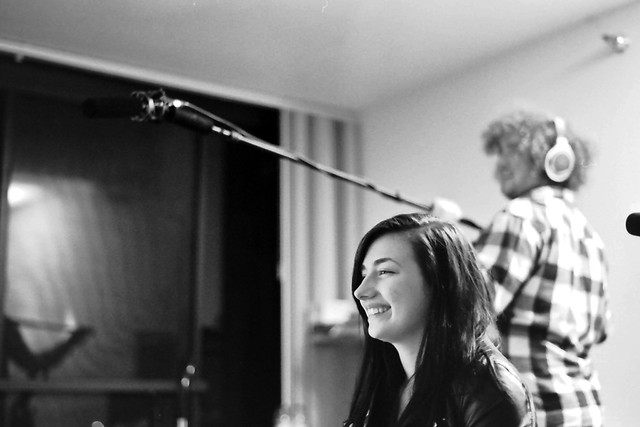Audio for Video-Jon Fulton
Great explanation of sample rates, bit depth, single vs double recording systems, how to avoid clipping etc.
Some basics to capturing sound, as shared by Chris Clark of NspireD2:
- Record in a quiet spot – a carpeted study, not a kitchen with wood flooring. This will reduce echoes and produce a “warmer” sound.
- Reduce unwanted noise
- Yourself – microphone handling, paper rustling chair creaking, jewelry
- Background –phone, radio, TV, clock, door, construction, traffic, yard work
- Hum – electrical equipment, fan, fridge, fluorescent light, pipes, heat or AC
- Set the volume high – the highest level that does not peak in “the red zone.” One mistake that people make is setting the record volume level too low.
- Wear headphones – listen to your recording while it’s happening, so that you can catch problems. If you monitor a recording through a speaker, or can may get feedback and odd echoes.
- Record a second or two of quiet before and after – recordings don’t always start exactly when you think they do, and it’s easy to edit out dead time that you don’t want.
- Speak clearly – some people speak so fast that their words become slurred. Remember that other people need to understand what you’re saying.
- Get close – but not too close – locating the microphone 12 inches away helps ensure the recording is loud enough and background sounds do not overpower the voice. Get too close and you’ll record breath sounds from words like “Pick” and “Fuss.”
- Use a handheld microphone or recorder if you can – hold it so that the tip is an inch away from the speaker’s chin and pointed toward his or her mouth.
Traig Foltz, an audio engineer colleague, has one more suggestion: reduce the bass. A lot of recording equipment comes standard with a low-cut filter that makes a recorded voice easier to understand. If you don’t have this, you can use software to reduce the bass after recording (in Audacity, try setting the High Pass Filter to 100).
See also…
Seven Steps to Noise-Free Digital Audio from O’Reilly Media
Juiced Link has a terrific PDF on Three Steps to terrific audio recording.
Independent producer Yowei Shaw has tried a few options, and she’s found a good solution for recording her voice tracks at home. Via Transom.
